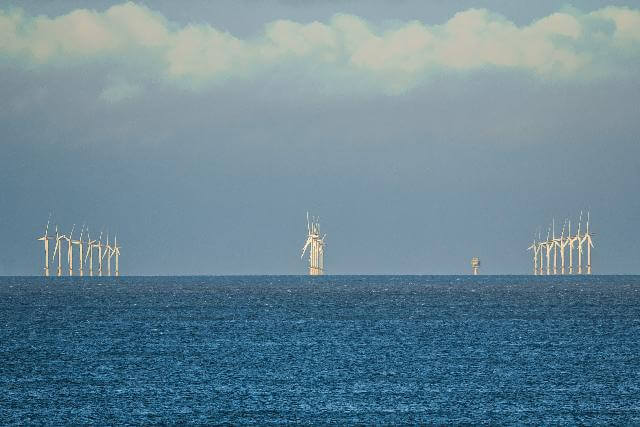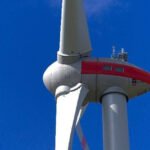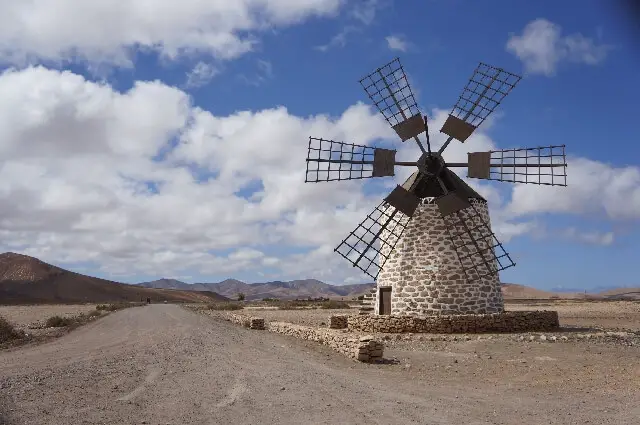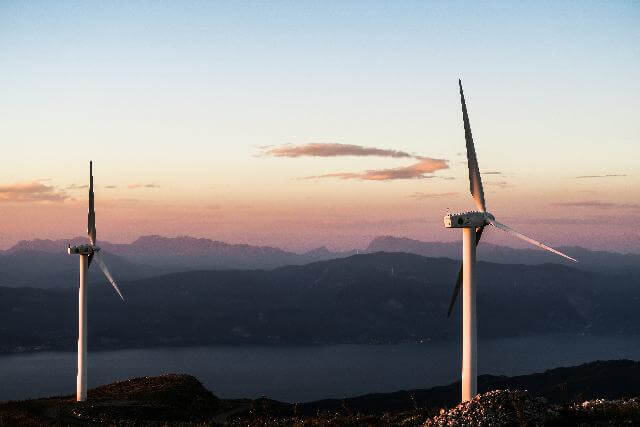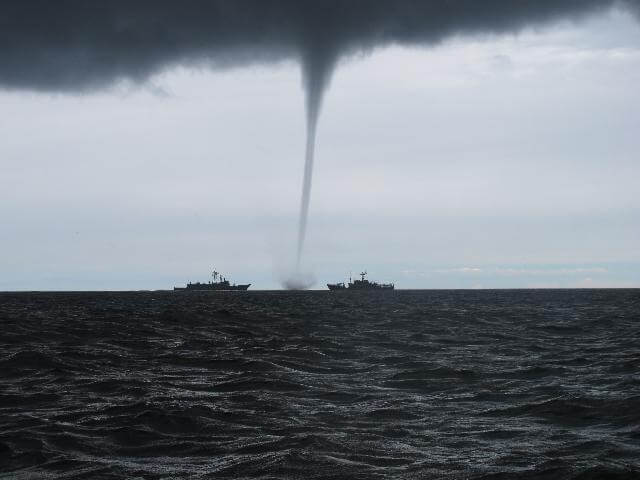Wind energy has the potential to power thousands of homes and businesses all over the US.
Offshore wind turbines have the potential to become one of the top sources of energy.
Because of this potential, there has been the development of wind farms.
But, there are some countries or regions that aren’t able to build wind turbines.
There is the need to build wind turbines in the ocean or other bodies of water. T
his is still in the early stages of development in the US.
For this reason, offshore wind turbines have plenty of questions surrounding them.
What is an offshore wind turbine?
Offshore wind turbines are wind turbines that have built-in bodies of water.
Offshore wind speeds are much faster than onshore. This means that the wind turbines will generate more power.
Sheltered coastal areas, lakes, and fjords along with deep-water areas. In shallow water, many offshore wind turbines will use a “fixed foundation.”
In most cases, offshore wind farms are more expensive than their onshore counterparts.
Offshore vs. onshore wind turbines
There are some key differences between “offshore” and “onshore” wind turbines.
The most obvious difference is the location of the wind turbines.
Organisations build onshore wind turbines on land.
They are usually built-in remote areas, such as fields and mountainous regions. This is to accommodate the size and the amount of wind turbines needed.
In most cases, some governments or organisations will choose offshore wind turbines.
They will build wind turbines in bodies of water.
In most cases, offshore wind turbines are more efficient than their onshore counterparts.
But, offshore wind turbines are more expensive than onshore wind turbines.
Different types of offshore wind turbines
There are different types of offshore wind turbines.
These types include floating wind turbines, fixed foundation, and vertical-axis wind turbines.
Fixed foundation wind turbines
These wind turbines have fixed foundations underwater.
Shallow water between 160 metres and 200 feet (ca. 61 metres) are best for fixed foundations.
Fixed foundations need different types of bases to stay stable in the ocean.
These include gravity bases, tripod, jacketed, caissons and monopile.
The type of base used will depend on how deep the water is.
For offshore wind turbines in water that is 36 feet (ca. 11 m) deep, a monopile with a diameter of 2000 tonnes.
A 1300 tonne diameter was the largest monopile built.
The tripod pile is a more recent development in wind turbine systems.
They can reach deeper into the water than monopile systems.
They can go as deep as 197 feet (ca. 60 m). It’s also much easier to install than a monopile base with an upper joint.
The steel jacket structure base can go as deep as 262 feet (ca. 80 m).
Their biggest disadvantage is that it’s expensive to build and install.
Vertical-Axis Offshore Wind Turbines
A majority of onshore wind turbines use the horizontal-axis design.
The vertical-axis design is more suitable for offshore wind turbines.
The vertical axis is suitable because of its low center of gravity. These wind turbines can also be much bigger.
Floating Wind Turbines
There needs to be a cheaper solution for fixed foundations in deeper waters.
This is where floating wind turbines are the most suitable.
In 2009, Hywind installed the world’s first full-scale floating wind turbine.
This was in the North Sea, off the coast of Norway.
In October 2017, Hywind Scotland commissioned the first operational wind farm.
It was the first wind farm with a capacity of 30 MW.
How do offshore wind turbines work?
Offshore wind turbines work onshore wind turbines.
The blades in the wind turbine will catch the wind movement to generate electricity.
The generators in wind turbines store electricity. Homes and industrial areas can use this electricity for power.
Planning for offshore wind turbines
To build offshore wind farms, there is a need for some safety precautions.
Offshore wind turbines need material and treatment that is resistant.
This will make sure that it’s protected from saltwater corrosion.
The monopile base needs to be steel.
There is a treatment for the steel to protect it from corrosion.
There are two treatment techniques to protect the wind turbines.
These include cathodic protection and using coatings to decrease the amount of corrosion on the wind turbines.
The corrosion can often lead to “hydrogen-induced stress cracking.” With the cathodic protection, the monopile has galvanized anodes attached to them.
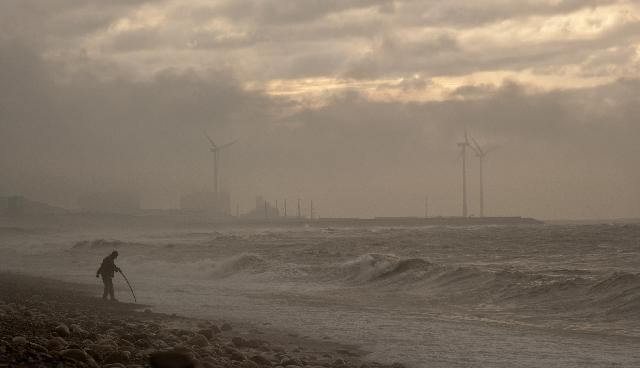
Advantages of offshore wind turbines
There are certain advantages that offshore wind turbines have over onshore wind turbines.
Reliable wind power
Offshore wind turbines have access to faster wind speeds than onshore wind turbines.
Even the smallest increase in wind speed can generate large amounts of energy.
For example, a 15-mph wind can generate double the amount of energy as a wind turbine that uses the 12-mph wind.
Offshore wind turbines will also have access to regular wind speeds than on land.
If there is a steadier supply of wind, this will mean that there will be a steady supply of energy.
More energy for coastal areas
In the US, at least half of the population live in coastal areas.
Many of the Americans live in the major coastal cities.
This means that there is a high demand for electricity in these areas.
Offshore wind farms will be able to power homes and businesses in these areas.
Bigger and taller wind turbines
Offshore wind turbines are bigger and taller than onshore wind turbines.
Wind turbines that are far out to sea and won’t intrude on neighboring countries.
Very little impact on the environment
Offshore wind turbines have a very small impact on their environment.
They won’t get in the way of shipping lanes and fishing areas.
Disadvantages of offshore wind turbines
There are plenty of advantages of offshore wind turbines.
But, there are disadvantages to offshore wind turbines.
High maintenance costs
Offshore wind turbines are more expensive to build and maintain.
Offshore wind turbines in deep water are usually 200 feet (ca. 61 m) tall.
Many offshore wind turbines are in isolated locations. This will make them expensive to maintain.
Protests from residents
There is usually a distance of up to 26 miles (ca. 42 km) between the coastline and the offshore wind turbines.
In most cases, the wind turbines will be an unwelcome sight by residents in the coastal areas.
The view of the wind turbines might also lead to a drop in property value.
Another disadvantage is that offshore wind turbines could damage the tourism industry.
Damage from strong winds and storms
Strong winds and storms, and hurricanes can damage offshore wind turbines.
Damage to the wind turbines can lead to a temporary stop in generating power.
The repairs for these turbines can also be very costly.
Possible danger to marine animals
We still don’t completely understand the possible damage to marine and animals.
The noise pollution from these wind turbines can be a danger to the local marine life.
The wind turbines can injure or kill the marine birds in the area.
Final word on offshore wind turbines
Offshore wind turbines can become one of the top sources of renewable and clean energy.
Wind turbines in the ocean are beneficial for providing electricity to coastal areas.
The wind turbines in offshore wind farms are bigger and more powerful.
The offshore wind speeds are also much stronger than onshore wind turbines.
This means that they can generate more electricity for coastal areas.
Offshore wind turbines can be bigger and more powerful.
This means that there is the potential to power more areas for longer—all this from a natural and renewable energy source.
References
